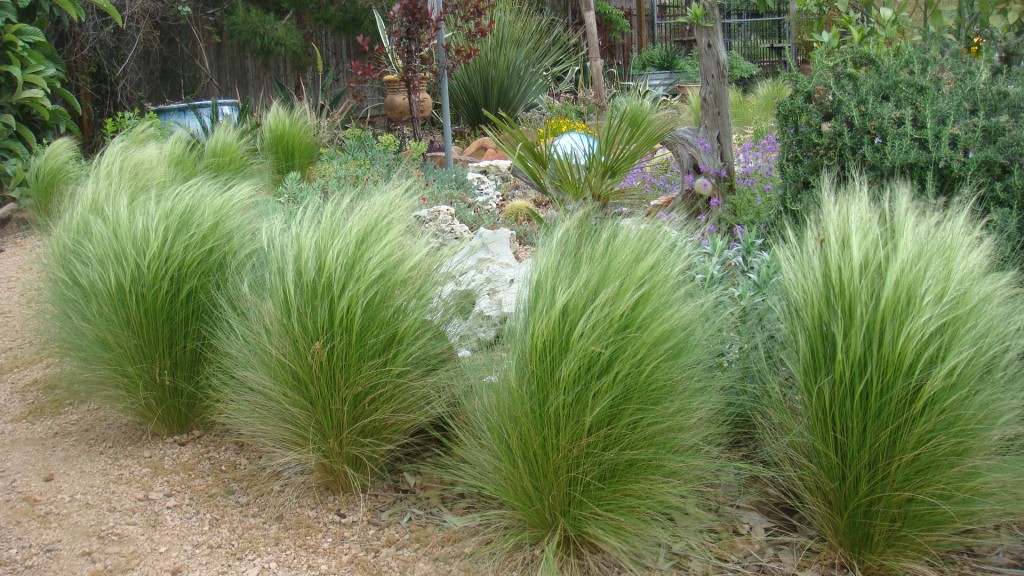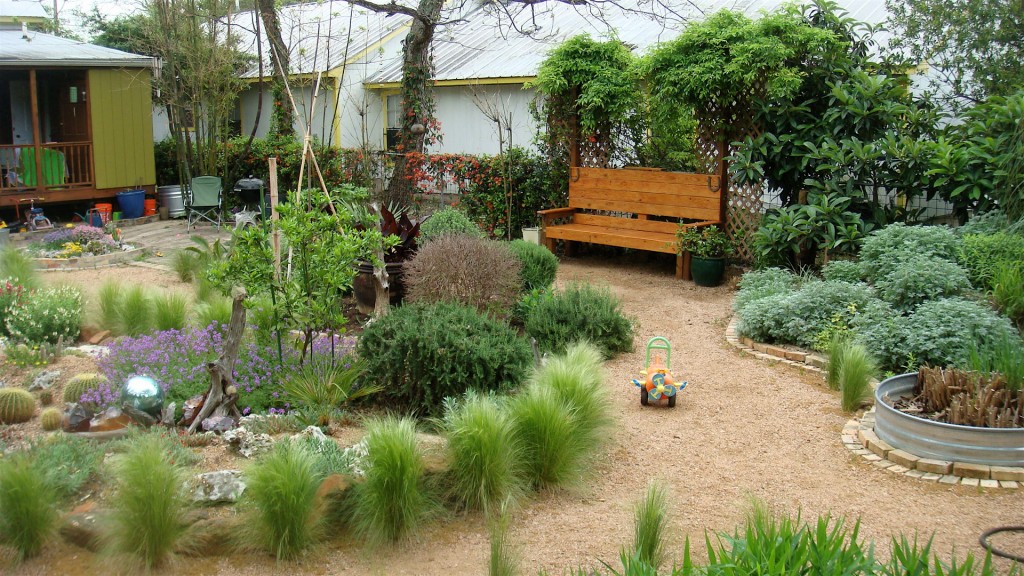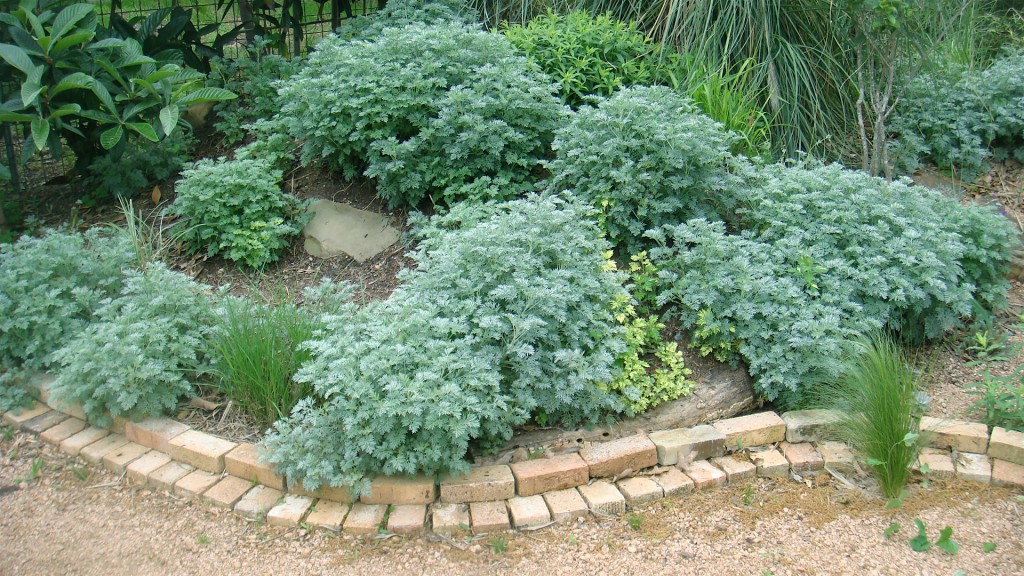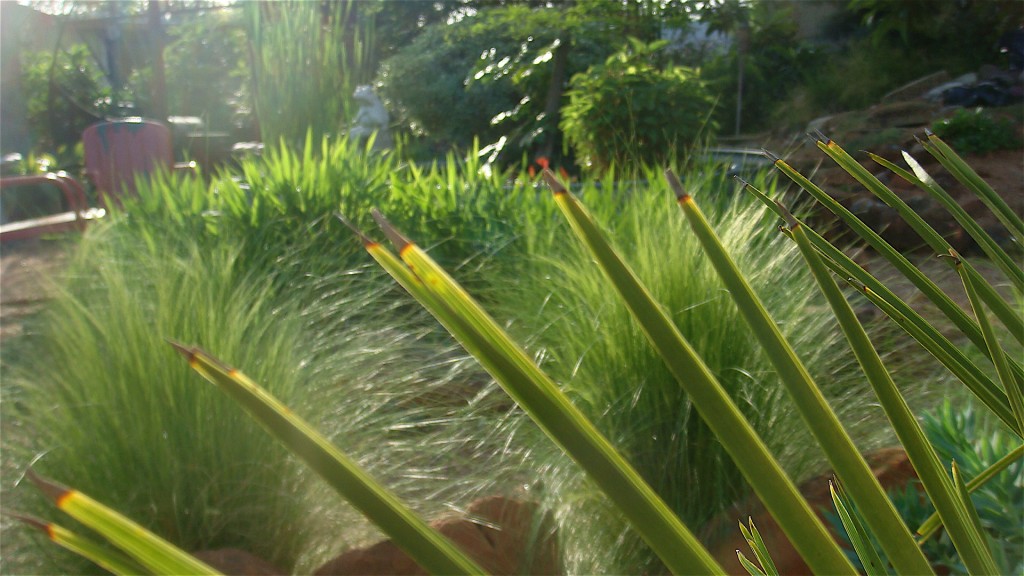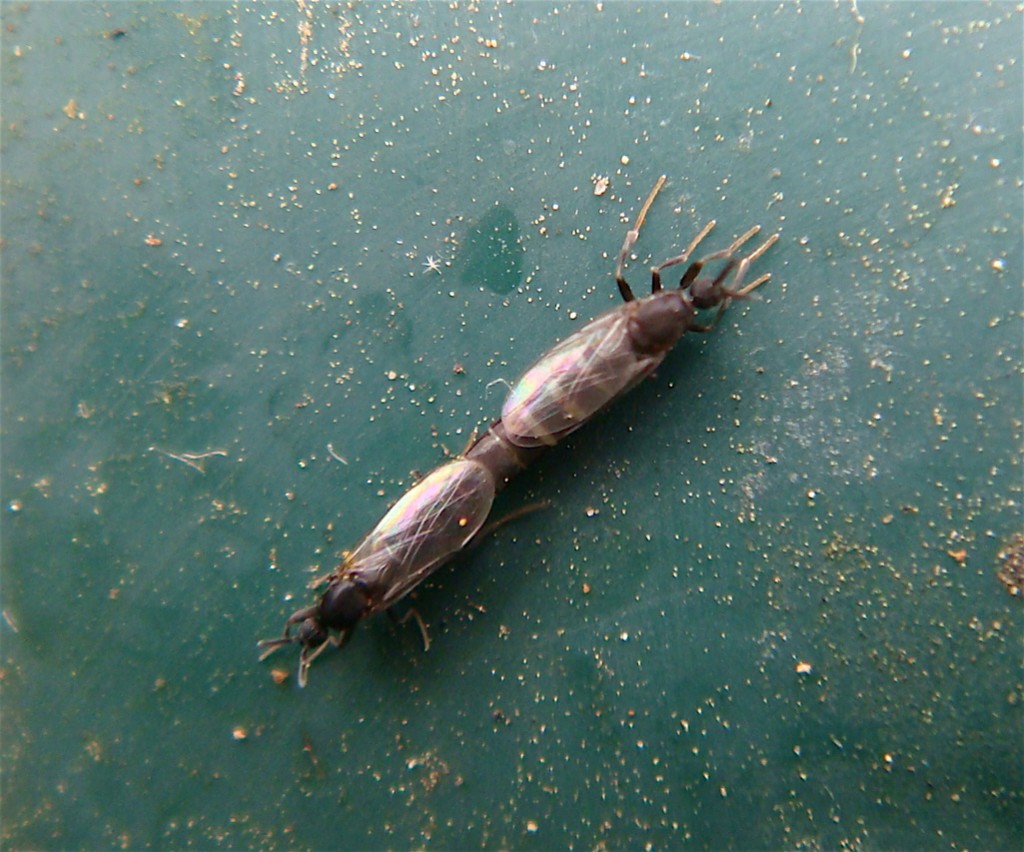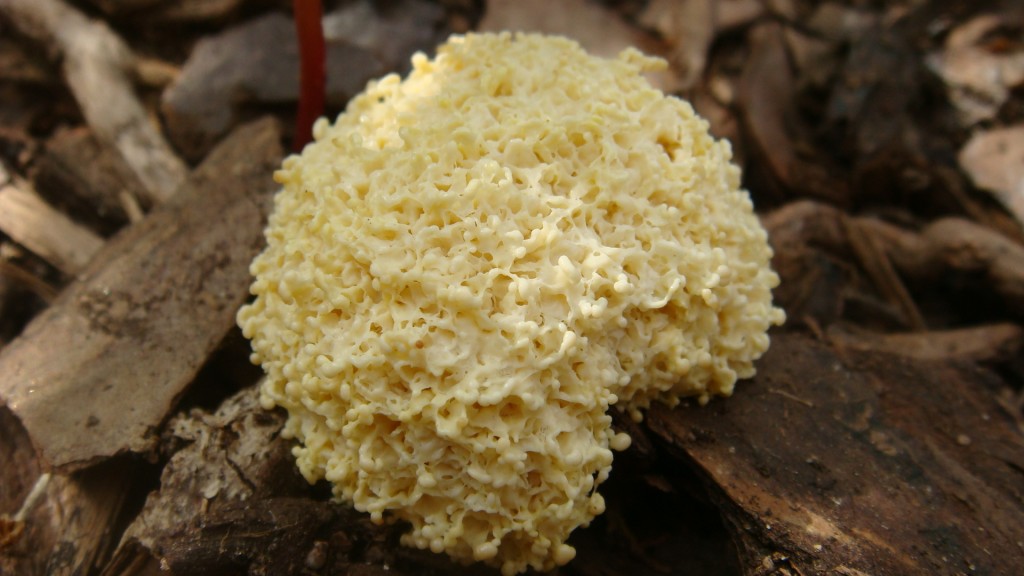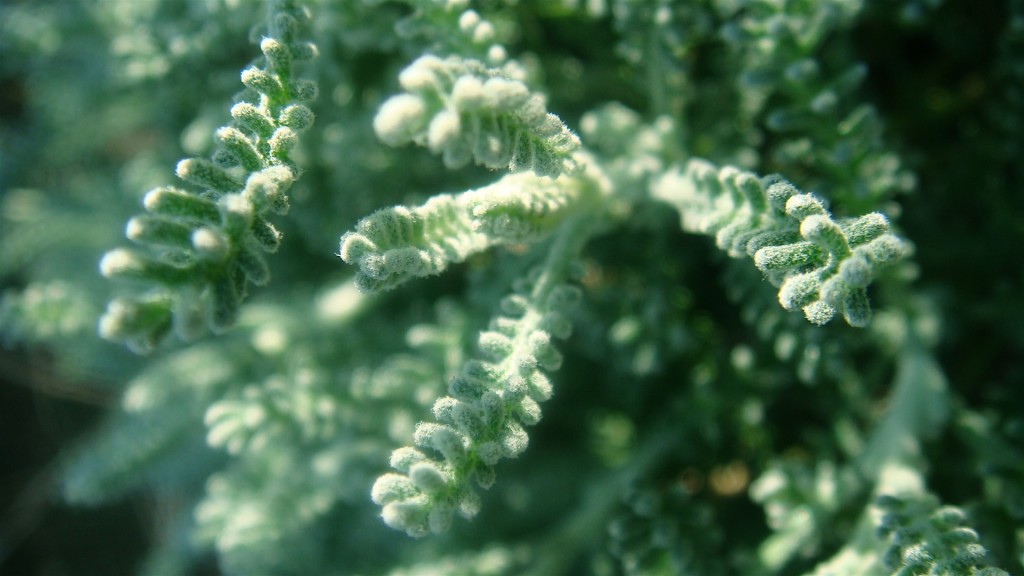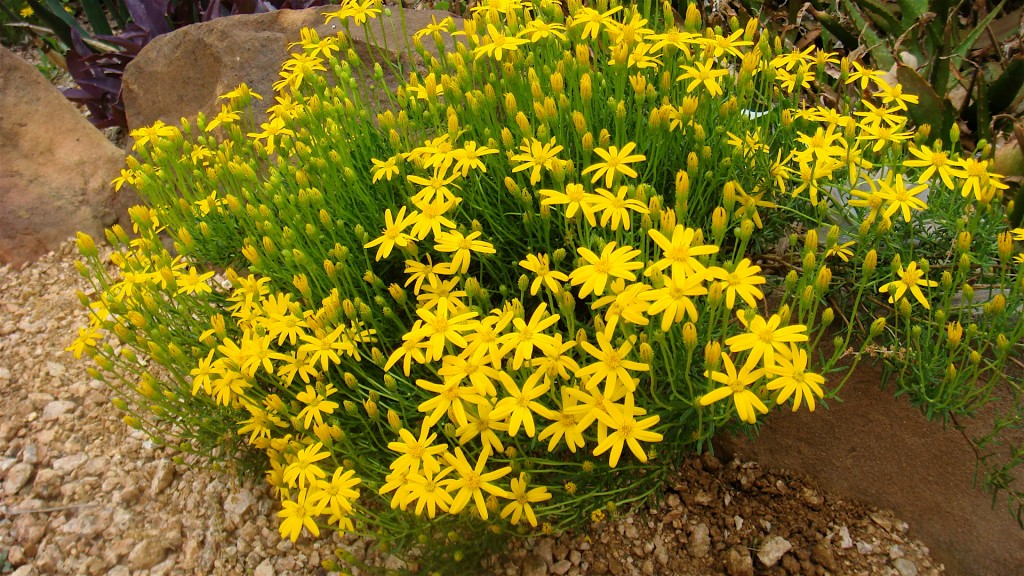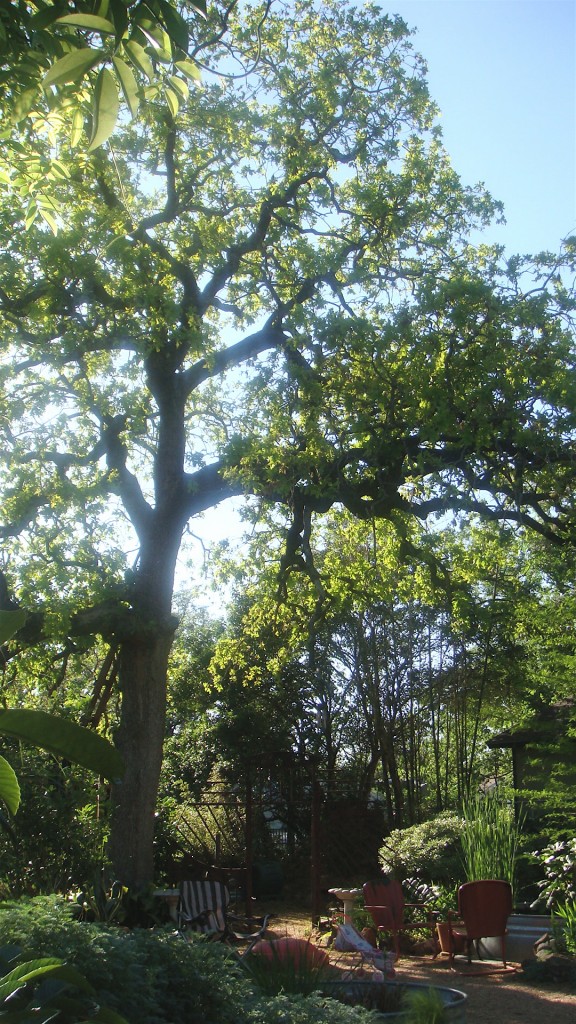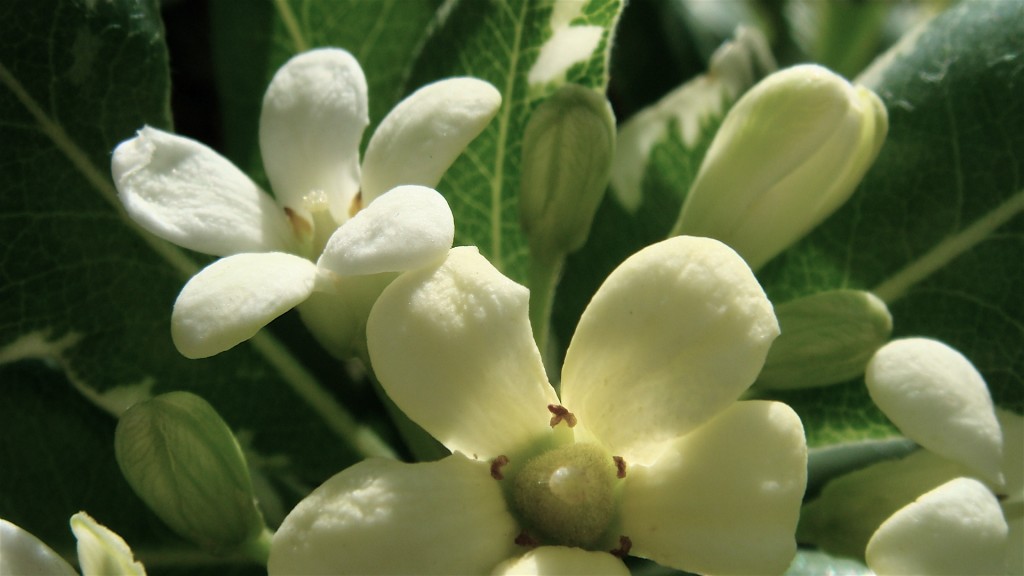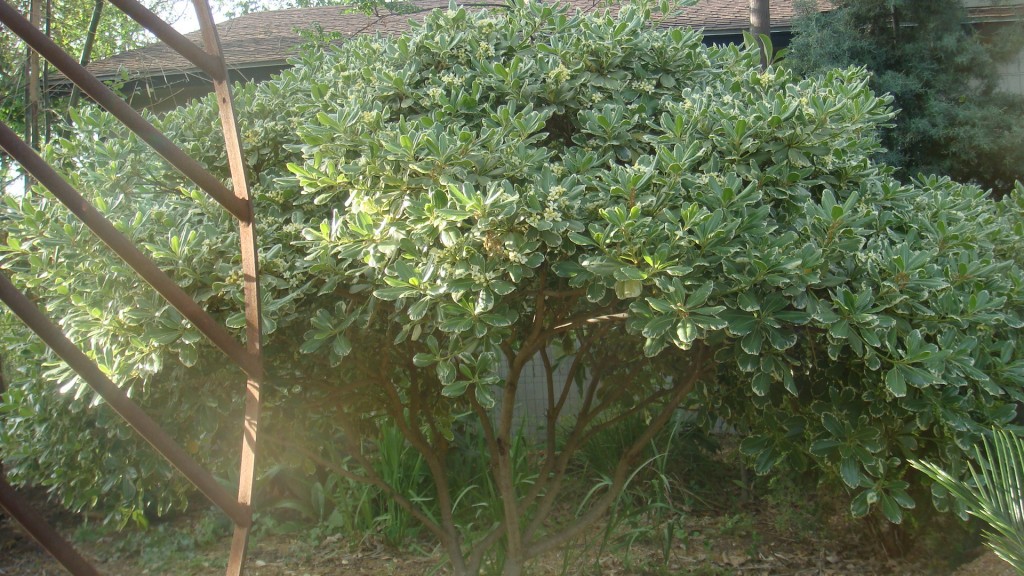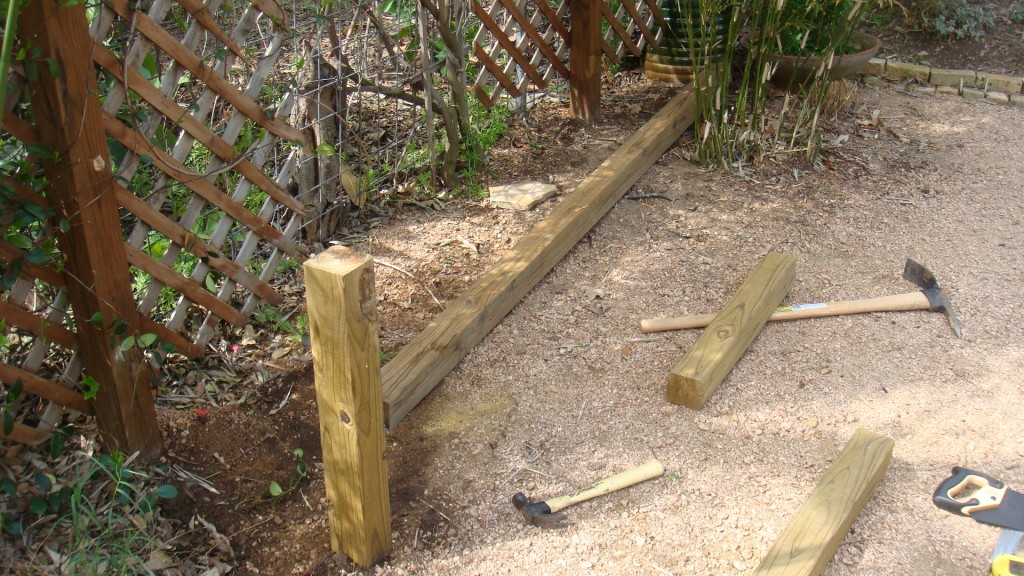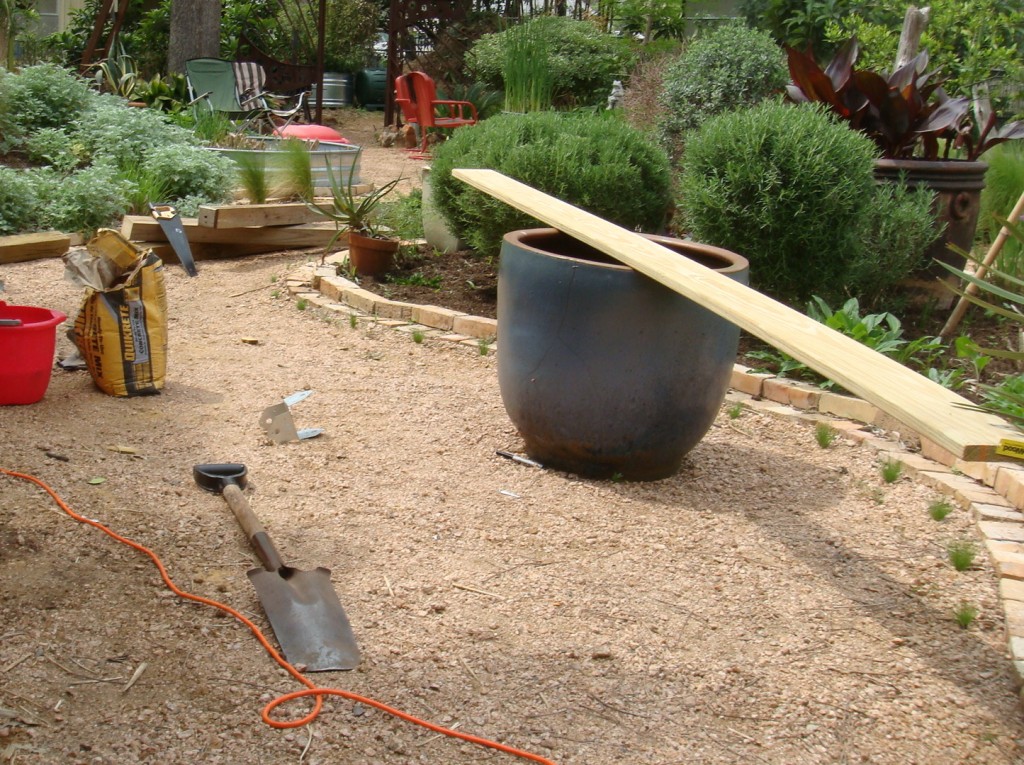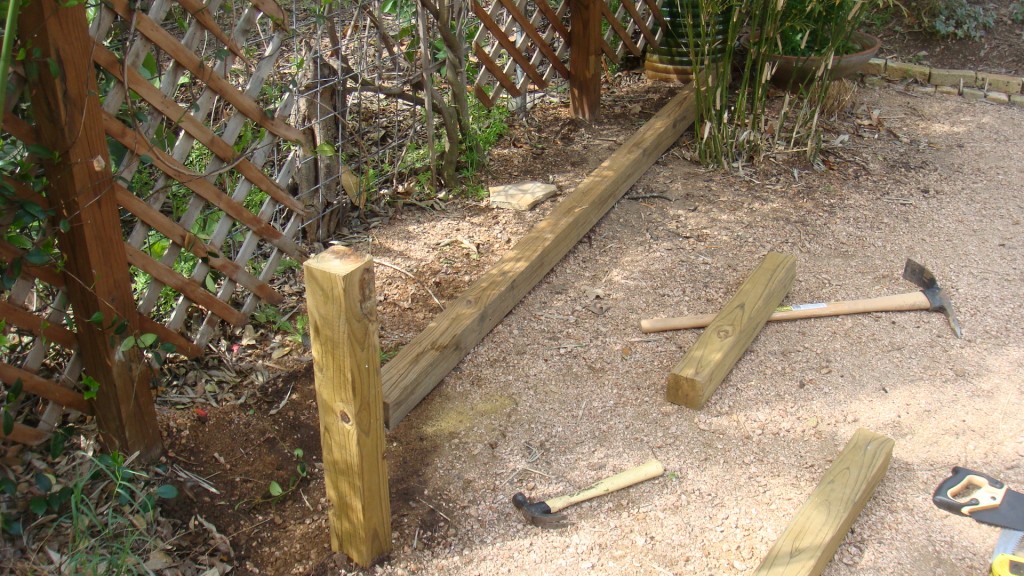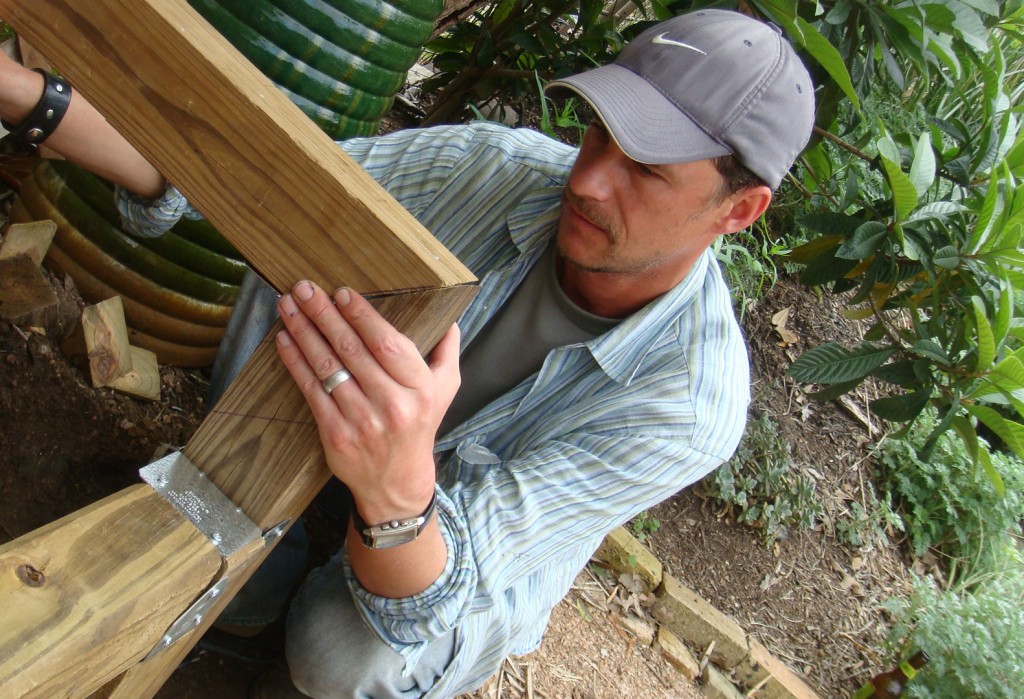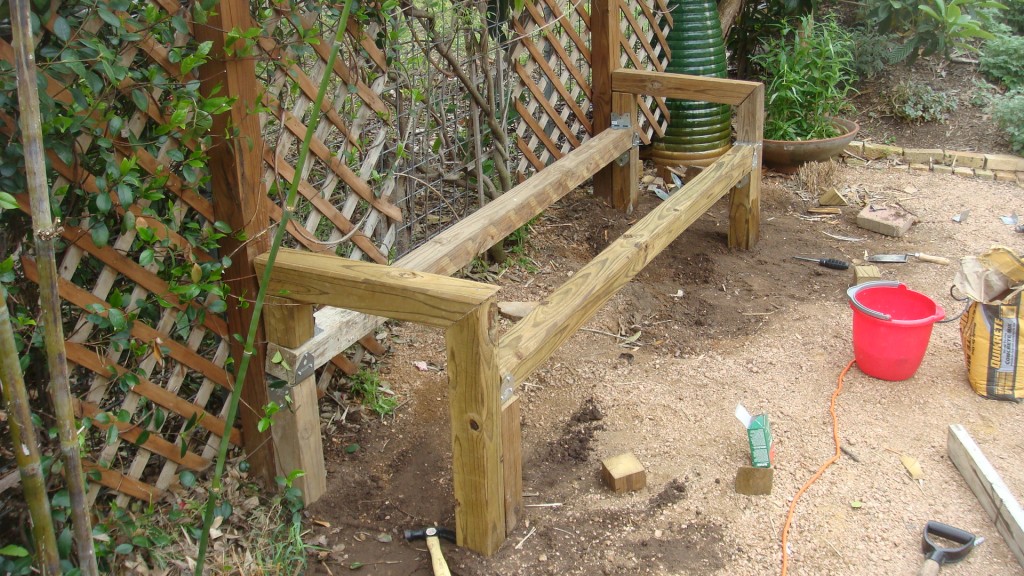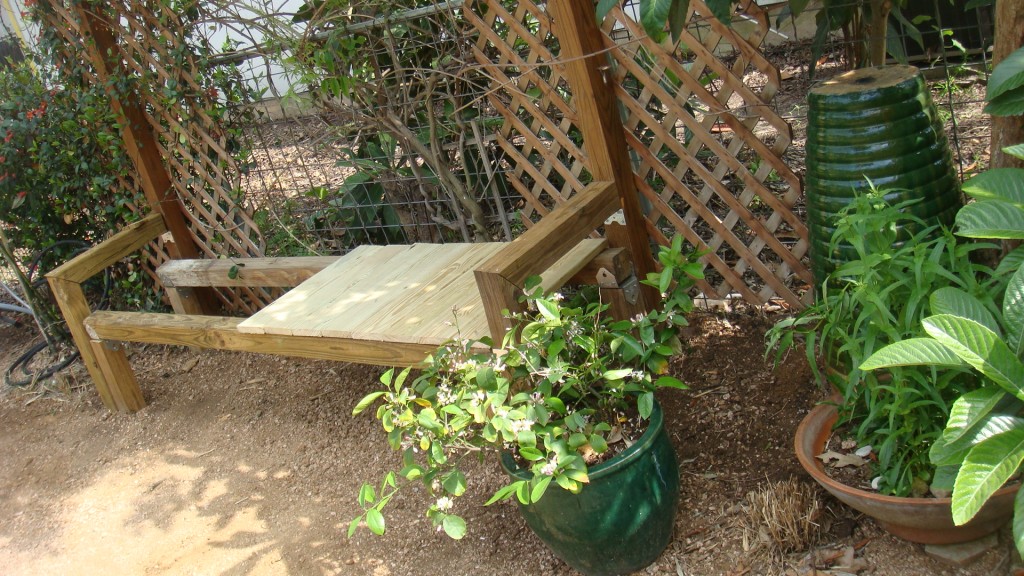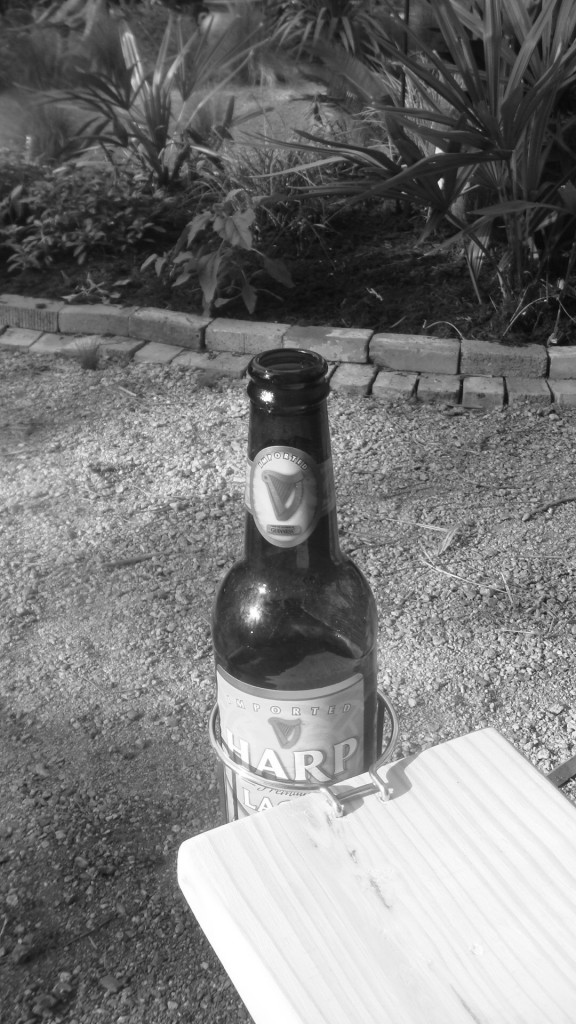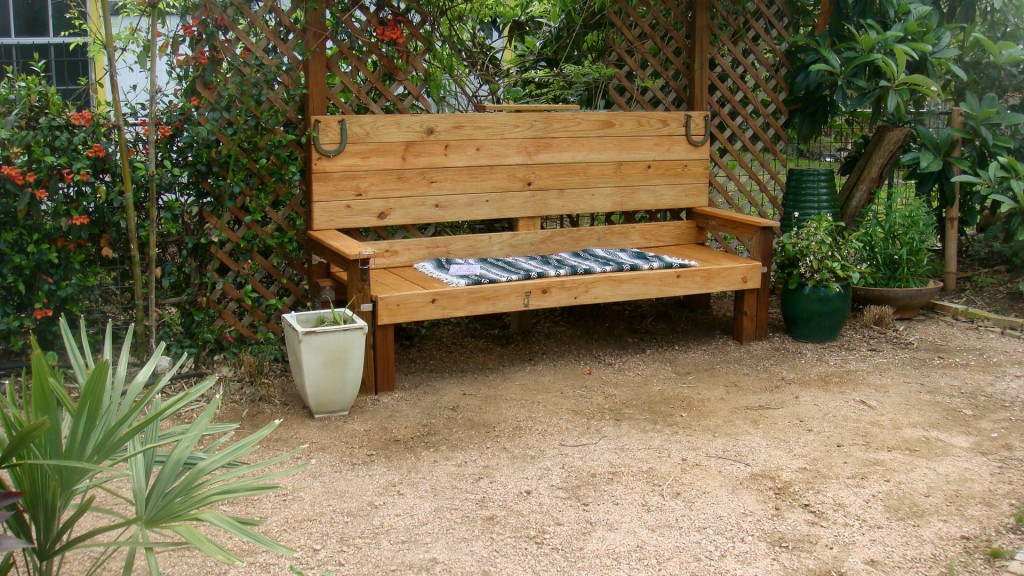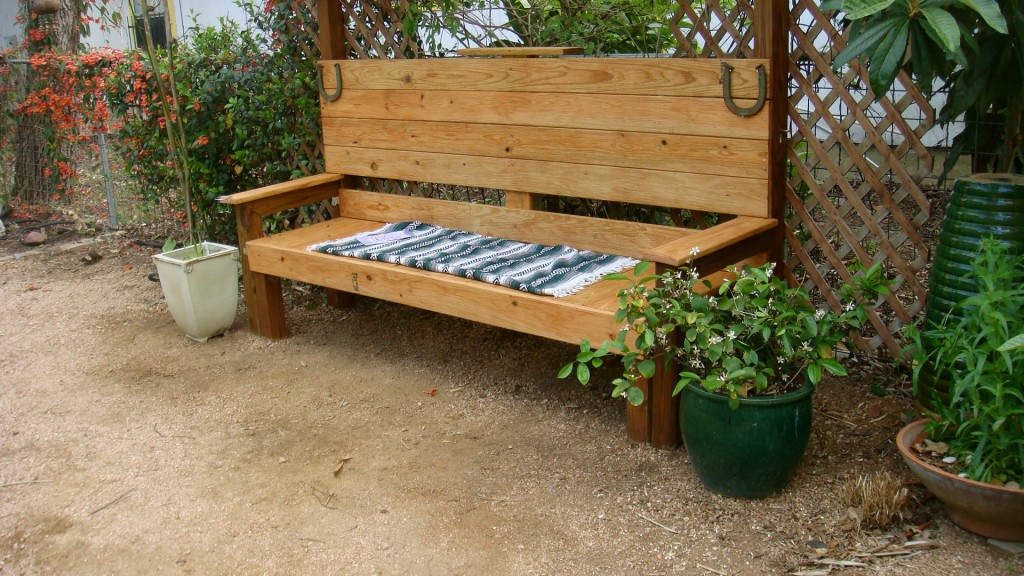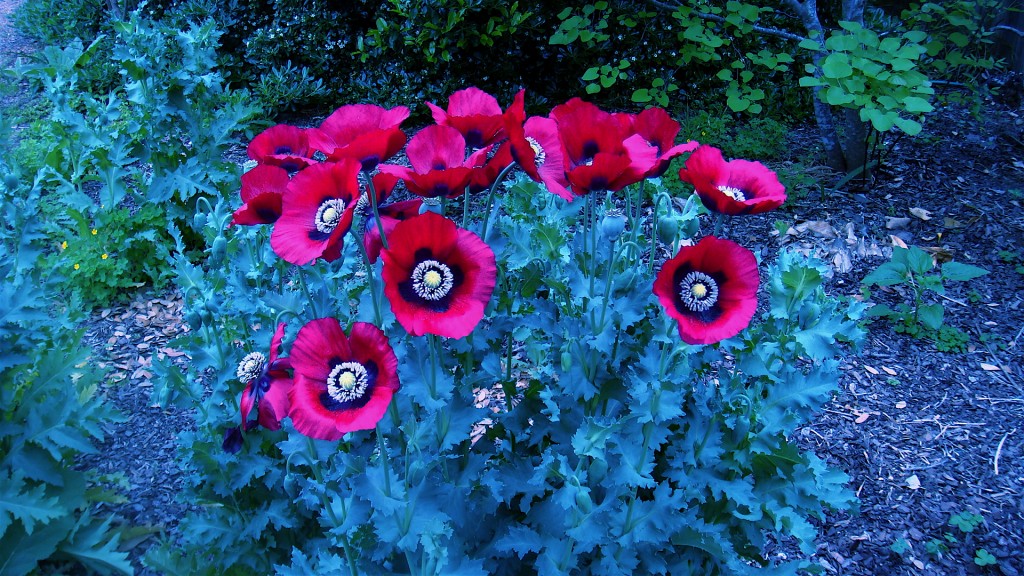
Poppies are popping at the front of the patch.
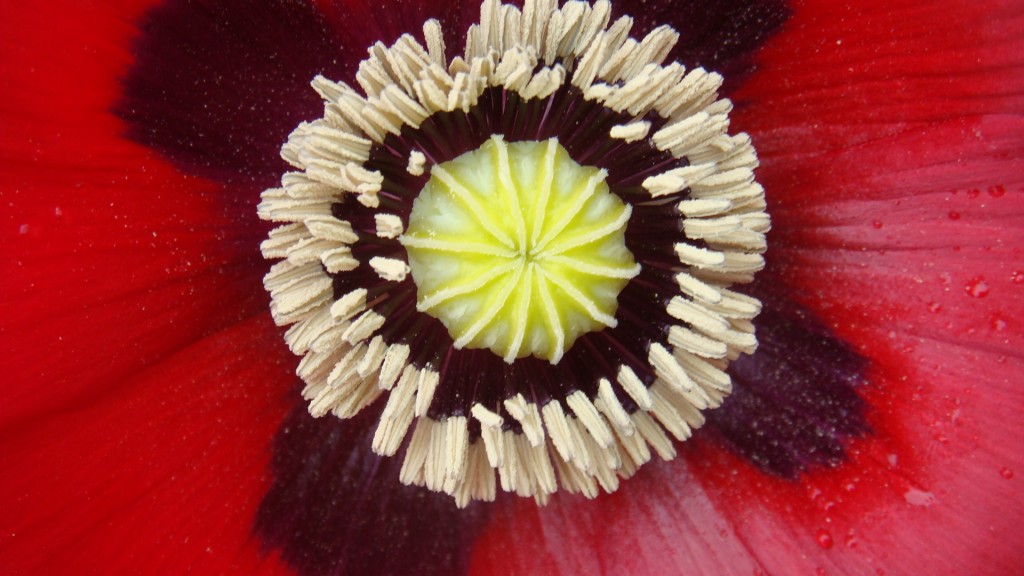
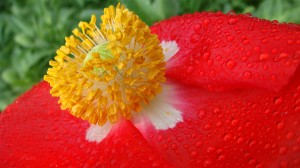 Some are so dense I have had to thin them out to allow light to reach my Gaura lindheimeri (whirling butterfly) plants, that were in danger of being engulfed by the waxy red explosion.
Some are so dense I have had to thin them out to allow light to reach my Gaura lindheimeri (whirling butterfly) plants, that were in danger of being engulfed by the waxy red explosion.
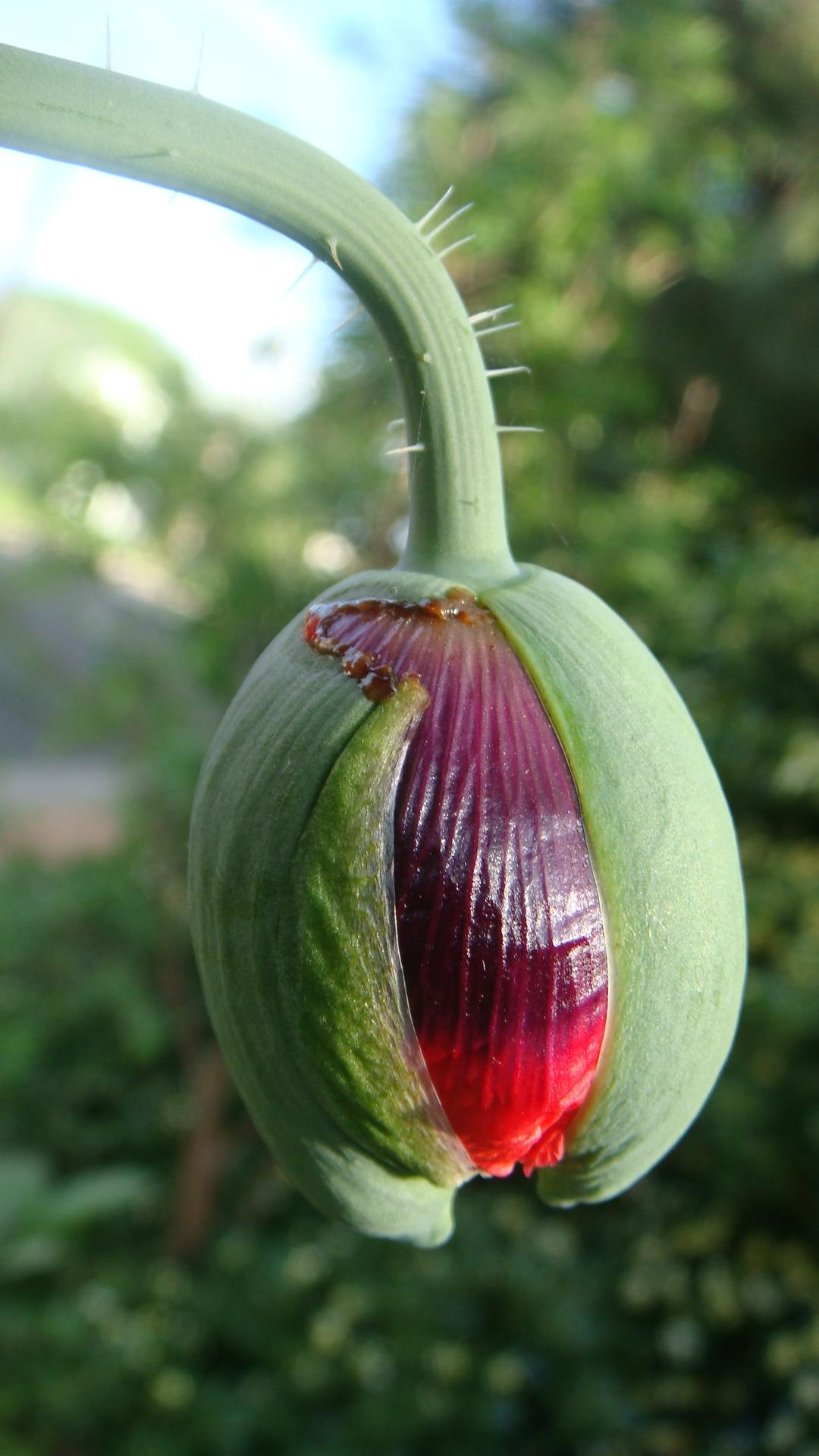
Ripping at the seams!
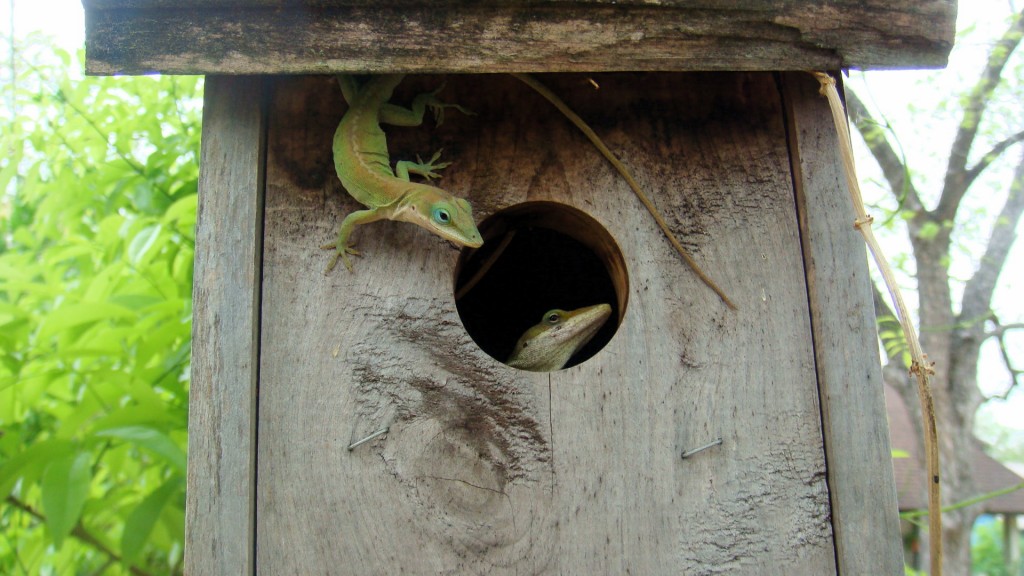
“The poppies are really putting on a good show this year, look Ben.”
“Don’t you think I can see them with these eyes of mine Penelope?”
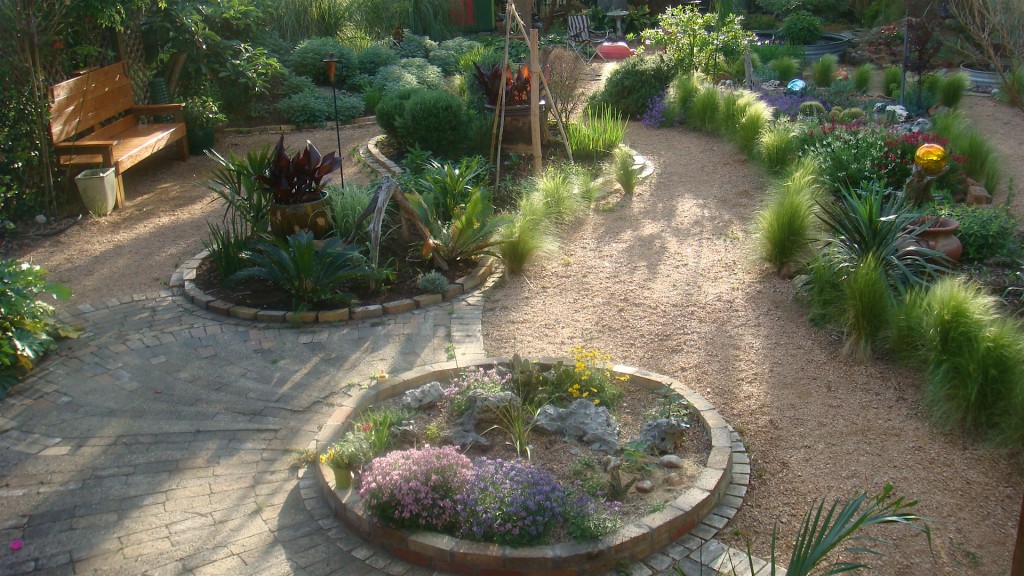 Everything is mounding up pretty well in the ESPatch this spring…the burgundy cannas are on the move and the Mexican feather grass is already in its prime, they are already full of seed pinnacles…
Everything is mounding up pretty well in the ESPatch this spring…the burgundy cannas are on the move and the Mexican feather grass is already in its prime, they are already full of seed pinnacles…
“Forests decay, harvests perish, flowers vanish, But grass is immortal.” – John J. Ingalls
…they looked spectacular the other day with the wind ripping through them,
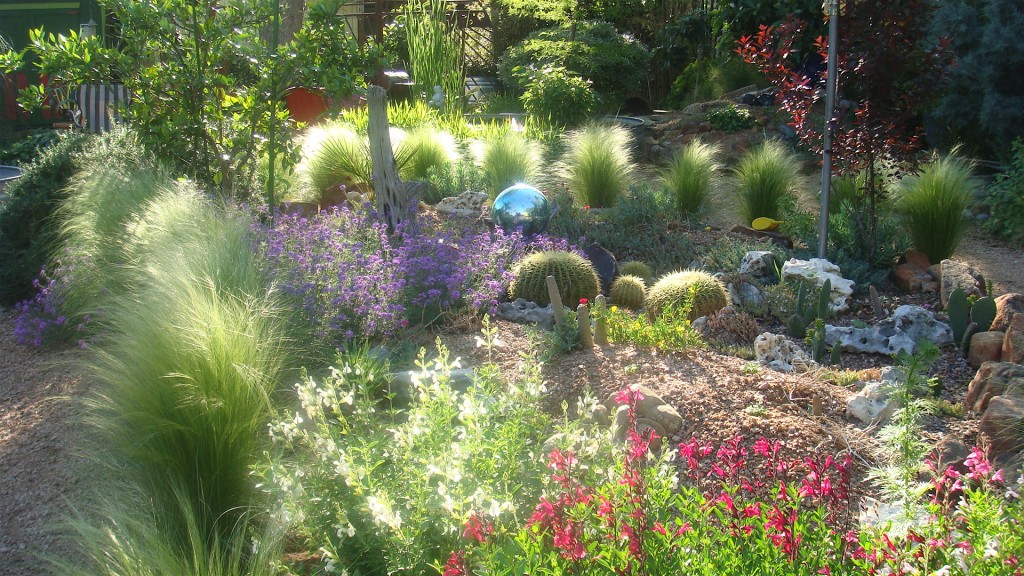 and then the setting sun igniting them.
and then the setting sun igniting them.
The spring stragglers are my Barbados cherry that is slowly greening up (center left) and my Mexican lime tree that so far only has two small green sprigs on it’s lower trunk.
My artemisia is also filling in quite nicely, that is the greener variegated variety (front right) that I am keeping a close eye on…it has spread significantly since I first planted it, but for now I will let it run wild up the slope.
“We’ll build dwarf palmetto spears, twice the length of a Naboo man…Hold, Hold, Here they come lads, Hold, HOLD, Here come the snails, HOLD.”
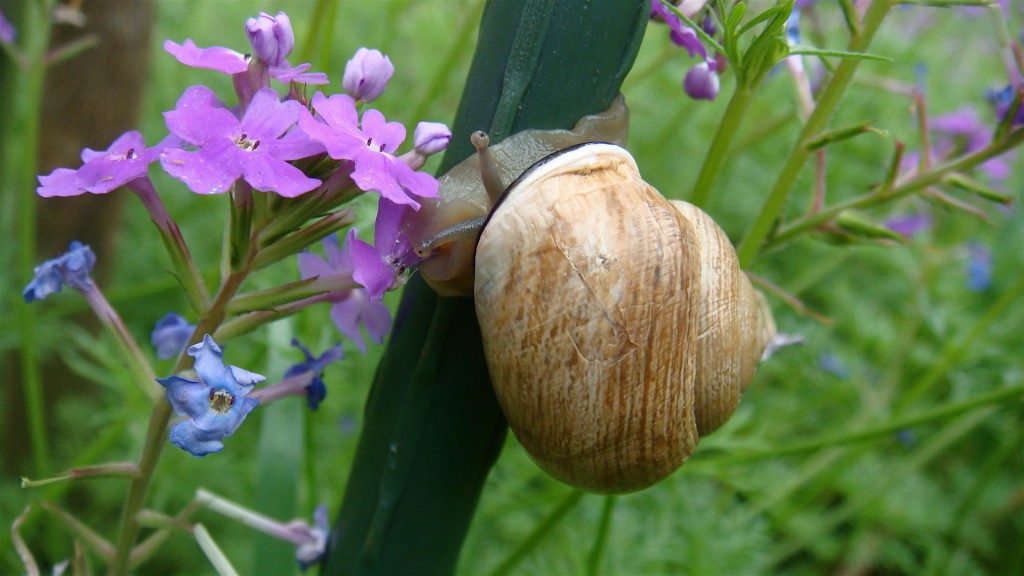
“Don’t be ridiculous William”.
I do not think I have ever seen so many snails in the ESP!
The inland sea oats have risen at an alarming rate…
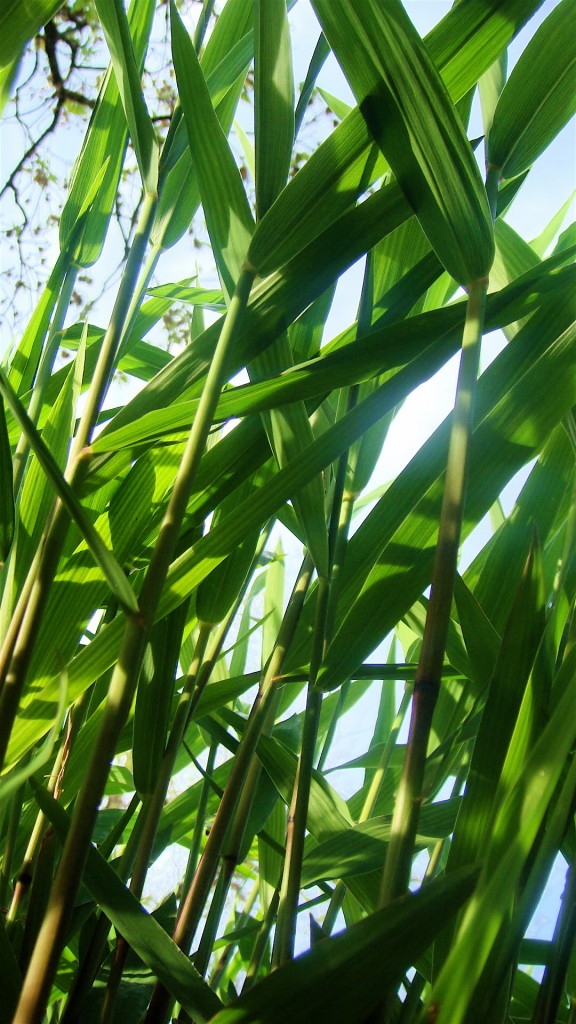 …I have been spreading my sea oats all around the patch for a number of years now.
…I have been spreading my sea oats all around the patch for a number of years now.
Is he serious Barb…Nicky…Margene?
While we are on the topic…
When I opened my compost bin today I was emphatically greeted by a cloud of these, they were tiny, in fact when I first leaned in to take a look I thought it was only one insect. I was shocked to find these “push-me-pull-you” escapades going on with almost all of them…soldier flies gone wild!
Hermetia illucens Linnaeus
Black soldier fly
Moving on…
Why the faces?
Well, I was weeding with my youngest hobbit, who has a hard time discerning what is a plant and what is a weed, when I glanced over and saw this little morsel of fun…
Oh yes, I had to do it, I don’t know why, I never seem to learn, a word of advice…do not prod the unknown! From a distance it looked like it had a “shell” of sorts on the outside, but oh-no how wrong I was. My finger sunk into the martian spore like it was a marshmallow…shocked I retracted my finger (which now had a glob of the martian-mallow stuck to the end of it)…and yes, you all know what was to happen next.
“No don’t do it, don’t even think about it!”
Ahh, but I was about to, and I did, and I immediately regretted it, yes, as if my last post was a prequel to my current predicament, I made a really bad choice and smelled my own finger. Oh like you wouldn’t! Oh you wouldn’t?
From my kneeling position my body went into an irreversible backward arc.
 I narrowly avoided taking my hobbit along with me in the recoil.
I narrowly avoided taking my hobbit along with me in the recoil.
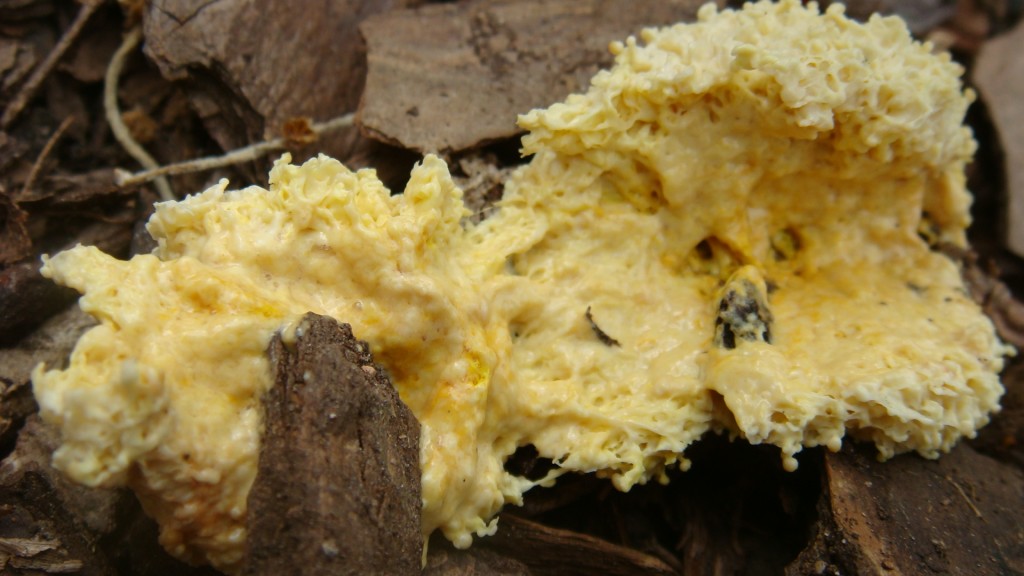 My over the top reaction naturally captured his full attention, he loved it. I ewwed, he ewwed, the adjacent Botox lady ewwed,
My over the top reaction naturally captured his full attention, he loved it. I ewwed, he ewwed, the adjacent Botox lady ewwed,
 Photo from: “The Pygmies Plight”, Smithsonian.
Photo from: “The Pygmies Plight”, Smithsonian.
And a Naboo member prodded the spore with a rather small stick.
He thought the stinky martian-mallow was the best and hunkered down over it for a front row seat waiting to see what would happen next. And apparently he wasn’t disappointed.

He let out a fit of squeals and giggles as I “smeared” the spore like rotten margarine with a piece of pine-bark.
The smell?…well look at this thing, I will spare you a detailed graphic description.
Something a little more refreshing to cleanse the pallet…
Santolina chamaecyparissus
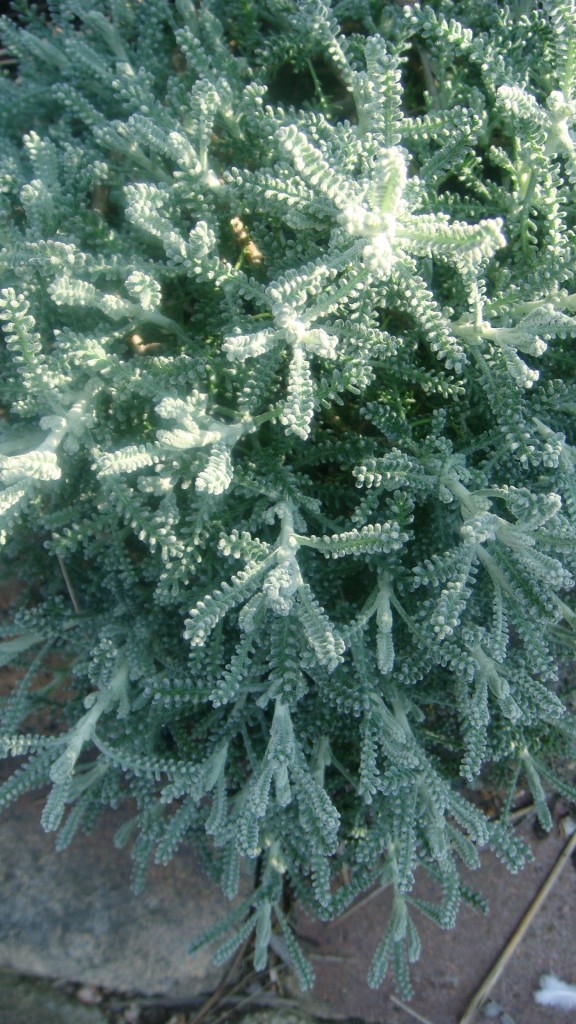 A small flowering plant native to the Mediterranean area (flowers are yellow and daisy like), santolina and artemesia are two silver plants that hold up well in our Texas summers, though in my experience santolina is just a little more fickle. I still have to have it dotted around. Unlike artemesia it grows very slowly, at least it does in the Patch. How does it grow for you?
A small flowering plant native to the Mediterranean area (flowers are yellow and daisy like), santolina and artemesia are two silver plants that hold up well in our Texas summers, though in my experience santolina is just a little more fickle. I still have to have it dotted around. Unlike artemesia it grows very slowly, at least it does in the Patch. How does it grow for you?
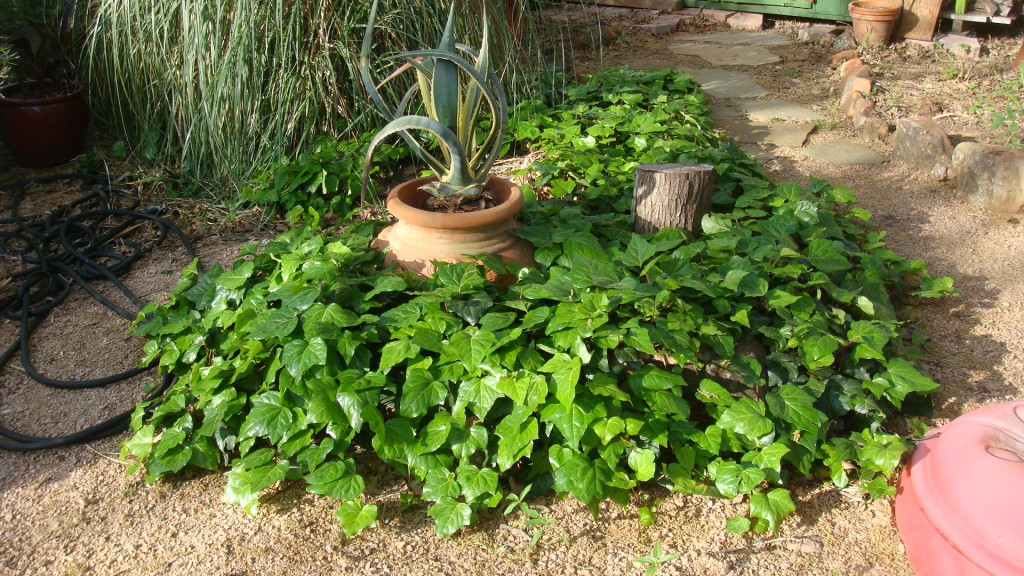 Ivy thicket, pruned up agave and an attractive hose! I am trying to establish three more ivy beds like this under the deep shade of my large Post Oak tree, it will take a few more years.
Ivy thicket, pruned up agave and an attractive hose! I am trying to establish three more ivy beds like this under the deep shade of my large Post Oak tree, it will take a few more years.
This Threadleaf ragwort or (and I hope I have this right)…
Senecio flaccidus
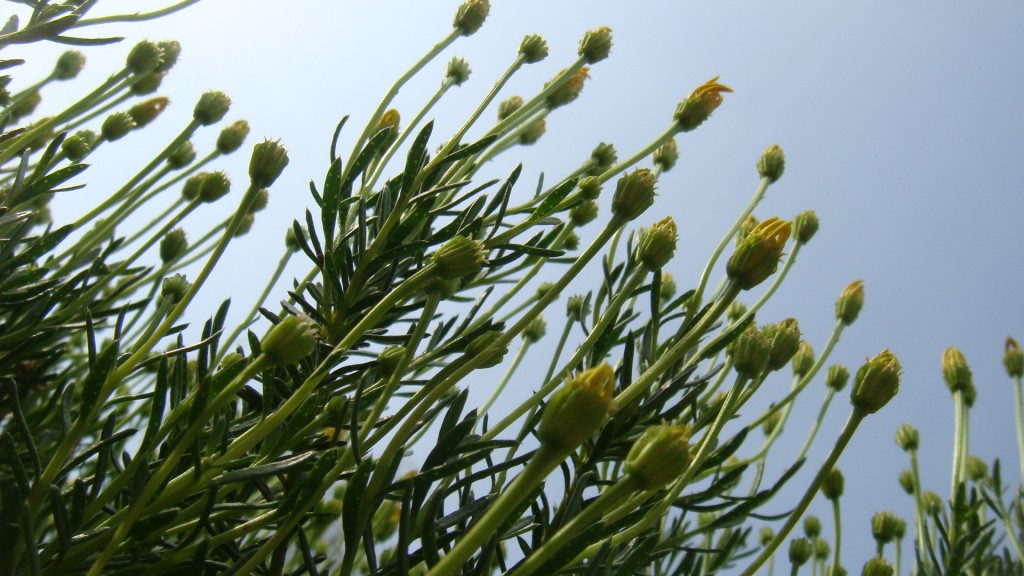
is a native of the southwestern great plains of North America, and a member of the daisy family. I have three of these and they all look like this right now, a great sprawling plant when planted up against boulders. It has a faint copper canyon daisy aroma.
“Lady-bug-Gaga”
All material © 2010 for eastsidepatch. Unauthorized
intergalactic reproduction strictly prohibited, and
punishable by late (and extremely unpleasant)
14th century planet Earth techniques.
